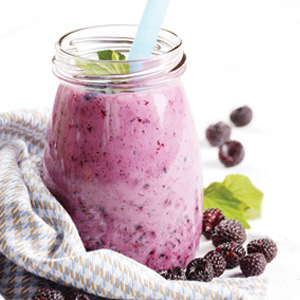Health: Healthy Smoothies, the Most Popular On-the-Go Breakfast

Research studies have shown that breakfast is the most essential meal of our day. It kick-starts our metabolism and fuels our body till the next meal. Fortunately, South Asians have a very good habit of eating breakfast. However, what’s missing is nutrient quality. The thing that has changed in the last 20 years is that we now prefer more on-the-go breakfasts like chai, coffee, smoothies, toast, fried chevda, and donuts instead of nutrient dense and filling options such as poha, upma, idli, etc. So, why not learn to make your on-the-go breakfast smoothie tasty, healthy, and diabetes-friendly?
Ditch smoothies from fast food restaurants or places like Smoothie King. They are loaded with sugars and artificial syrups. Instead, make your own smoothie in just 5 minutes.
1. Pick an unsweetened liquid base. 1.5 cups of unsweetened almond milk, coconut milk, coconut water, kefir, green tea, cold coffee, or 1% milk.
2. Add greens or fruits. Fruits and veggies are filled with antioxidant superheroes. They also help reduce intake of too many carbohydrates and calories in one single meal.
a. Vegetables: 1 cup of kale, spinach, broccoli, celery, cooked beets, or pumpkin puree
b. Fruits: ¾ cup of berries, ½ cup of mangos, pomegranate, chikoo, papaya, peach, melon, or seedless black jamun, and ½ a banana
3. Don’t forget the protein. 1 scoop of whey protein isolate or plant based protein powder can provide up to 20 grams of protein—enough to boost your satiety hormones and suppress your hunger hormones, preventing blood sugar spikes and cravings! Half a cup of low fat, low sugar, no-fruit-added Greek yogurt is also a good protein booster for your smoothie.
4. Give your smoothie a boost with superfoods. Superfoods are a combination of healthy fats, fiber, and plant-based protein. Some of them may be high in calories, but much needed for good health. Examples include 1 tbsp. of nut butters such as almond butter, 1 tbsp. of chia seeds or sabja seeds, 1 tbsp. of hemp hearts, 5-6 walnuts, 1/3 of a medium avocado, ½ cup of roasted rolled oats, 1 tbsp. of flaxseeds or sunflower seeds, or 1 tsp. maca or raw cacao powder (for chocolatey taste!). As these are superfoods, small amounts are enough to do the magic.
5. Sweeten your smoothie naturally. These natural sweeteners are nutrient dense, unlike white or brown sugar that mainly contains empty calories. However, they are also calorie dense. Therefore, measure the amounts before adding. Examples include 2-3 dates, 2 fresh or dried figs, ½ tsp. of raw honey, and jaggery sugar.
Bonus tip #1: A Desi Touch. Add a pinch of your favorite spice! Ground cinnamon, cardamom, turmeric, black pepper, pumpkin spice, fenugreek seed powder, fresh ginger root, dried mint, and roasted jeera powder are great flavor enhancers and digestion boosters.
Bonus tip #2: Prep Ahead. Line up 7 zip-lock bags and label them Monday through Sunday. Add your favorite combination of ingredients and freeze the zip lock bags. Each morning, remove a bag and add the ingredients to the liquid base and blend it for a nutritious morning treat! Prepping ahead makes your mornings less stressful.
Bonus tip #3: On the Weekend. Make a pretty looking, colorful, and delicious smoothie bowl. Involve your kids for fun, and teach them about different nutrients in the smoothie. Blend liquid base with fruits, vegetables, protein powder, and natural sweeteners. Top the smoothie bowl with superfoods, fruits, and nuts!
Keep in mind that portion control is key while making a delicious and nutrient-dense breakfast smoothie!
Jenifer Tharani, MS, RD, LD is a registered and licensed dietitian nutritionist with training from Emory University Hospital. The main focus of her nutrition consulting practice is working with South Asians to prevent and manage diabetes, high blood pressure, and obesity. Disclaimer: This article offers generalized tips, not professional advice. Please consult your physician for your individual needs.
Enjoyed reading Khabar magazine? Subscribe to Khabar and get a full digital copy of this Indian-American community magazine.
blog comments powered by Disqus












